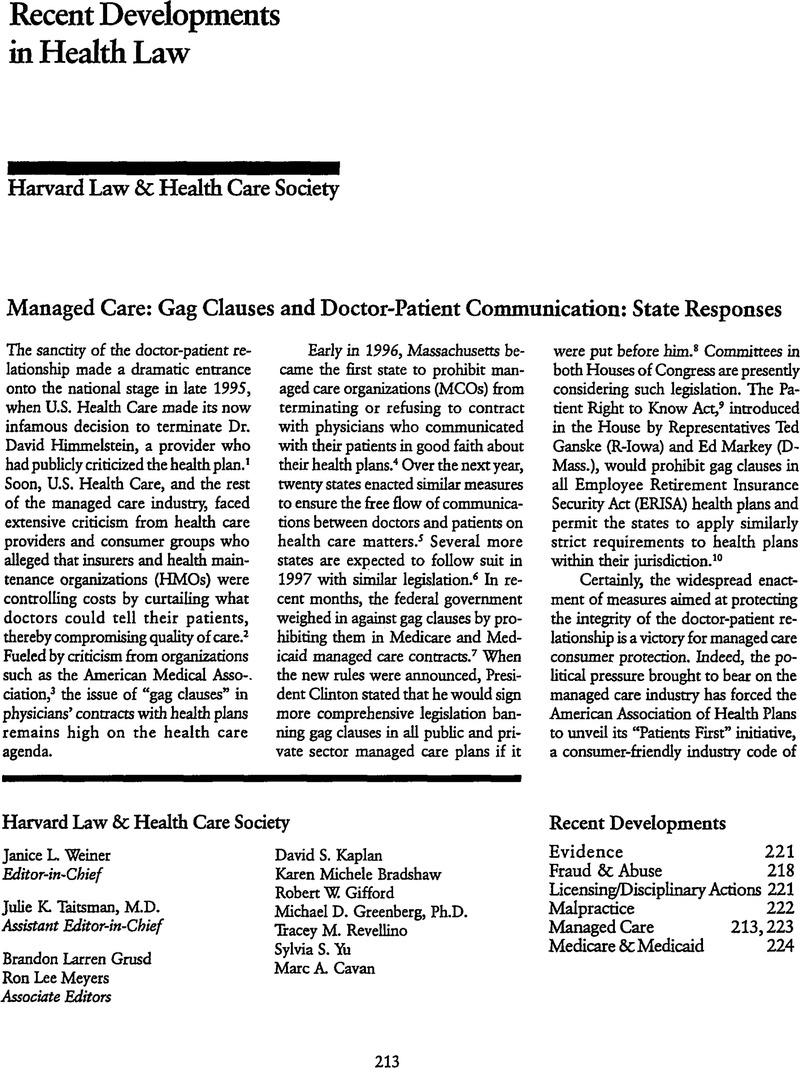Crossref Citations
This article has been cited by the following publications. This list is generated based on data provided by Crossref.
Miller, Tracy E.
1998.
Center Stage on the Patient Protection Agenda: Grievance and Appeal Rights.
Journal of Law, Medicine & Ethics,
Vol. 26,
Issue. 2,
p.
89.



